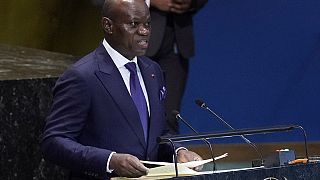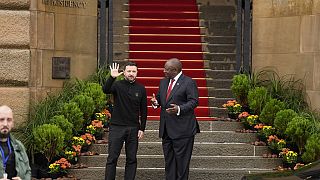UNCHR
Every second in 2020, more than one person was forced to flee within their own country, bringing the total number of internally displaced people across the world to a record 55 million.
This is according to two NGOs - the Internal Displacement Monitoring Centre (IDMC) and the Norwegian Refugee Council (NRC)
Despite travel restrictions linked to the Covid-19 pandemic, 40.5 million people have joined the ranks of the internally displaced, the highest number in a decade, the NGOS said Wednesday in a report.
These internally displaced people now outnumber the 26 million refugees who cross an international border to seek safety.
"It is shocking that someone has been forced to flee their home within their own country every second of the last year," said NRC boss Jan Egeland in a statement.
"We are failing to protect the most vulnerable from conflict and disaster," he added.
- Perhaps even more -
But while this is a record number, it is probably an underestimate, Bilak said.
The pandemic has made data collection difficult and may have caused more people to avoid shelters for fear of becoming infected.
But the pandemic has also worsened the socio-economic situation of these displaced people, and "this number could grow even more as countries sink deeper into crisis," Bilak warned.
The report points out that three quarters of IDPs were forced to flee by natural disasters, particularly extreme weather events.
Cyclones, monsoons, torrential rains and floods have hit densely populated areas in Asia and the Pacific, and an exceptional hurricane season in the Atlantic has also forced people to flee for safety.
In the Middle East and sub-Saharan Africa it was prolonged rains that took their toll.
- Climate impact -
"We can only expect that the future impact of climate change will make these catastrophic events more frequent and more violent, and consequently the number of internally displaced people will increase further," predicted the IDMC head.
In addition, some ten million internally displaced people have been forced to flee because of conflicts or outbreaks of violence, such as the war in Tigray, a region of Ethiopia plagued by devastating conflict, jihadist attacks in northern Mozambique or in Burkina Faso.
Endless wars such as in Syria, Afghanistan or the Democratic Republic of Congo also continue to force people to flee in large numbers and often for long periods.
While people fleeing natural disasters usually return home fairly quickly to rebuild, the same cannot be said for those fleeing war or violence. Their exile is usually much longer.
Of the 55 million displaced people, 38 million had fled fighting and violence, the report says.
To make matters worse, 95% of the new conflict-related displacement occurred in countries vulnerable to climate change.
"Climate change and the overexploitation of natural resources could exacerbate instability and conflict and cause forced displacement," the NGOs added.












Go to video
84% of world's coral reefs affected by worst coral bleaching event in history
01:40
‘The Herds’ puppets highlight climate change in Lagos
Go to video
South African orphanage rehabilitates injured predator birds
01:37
Indigenous and climate activists rally in Brasília ahead of COP30
Go to video
Heavy rains flood Congo's capital, killing at least 22 people
01:54
Uganda: the infiltration of plastics into agricultural fields and food raise concern